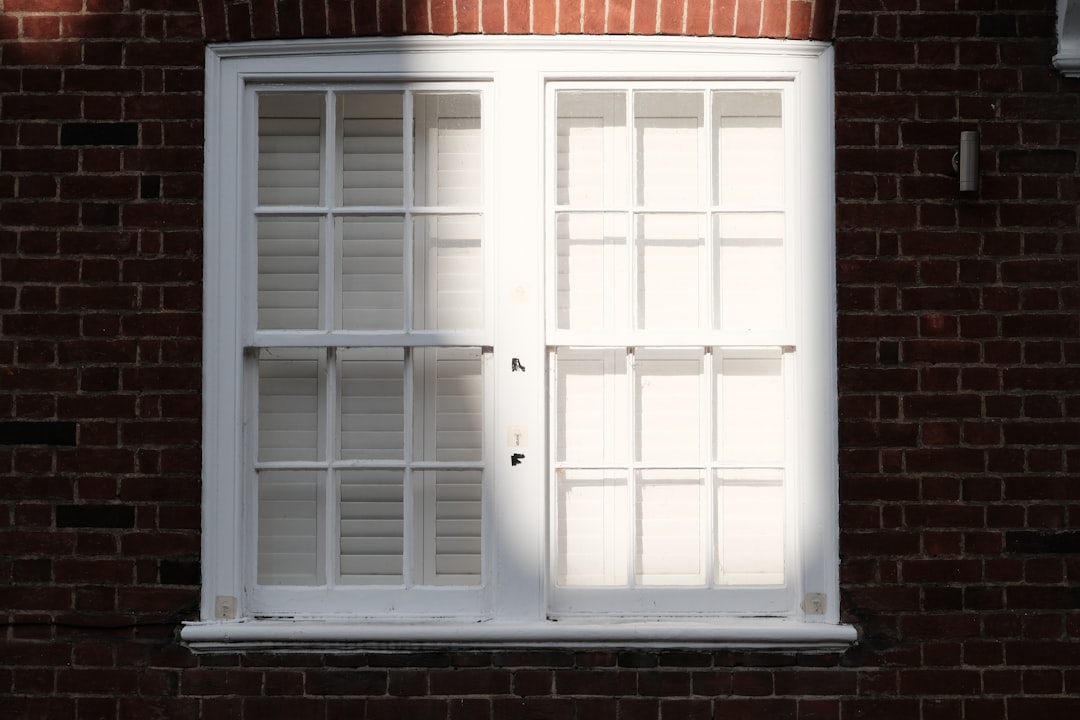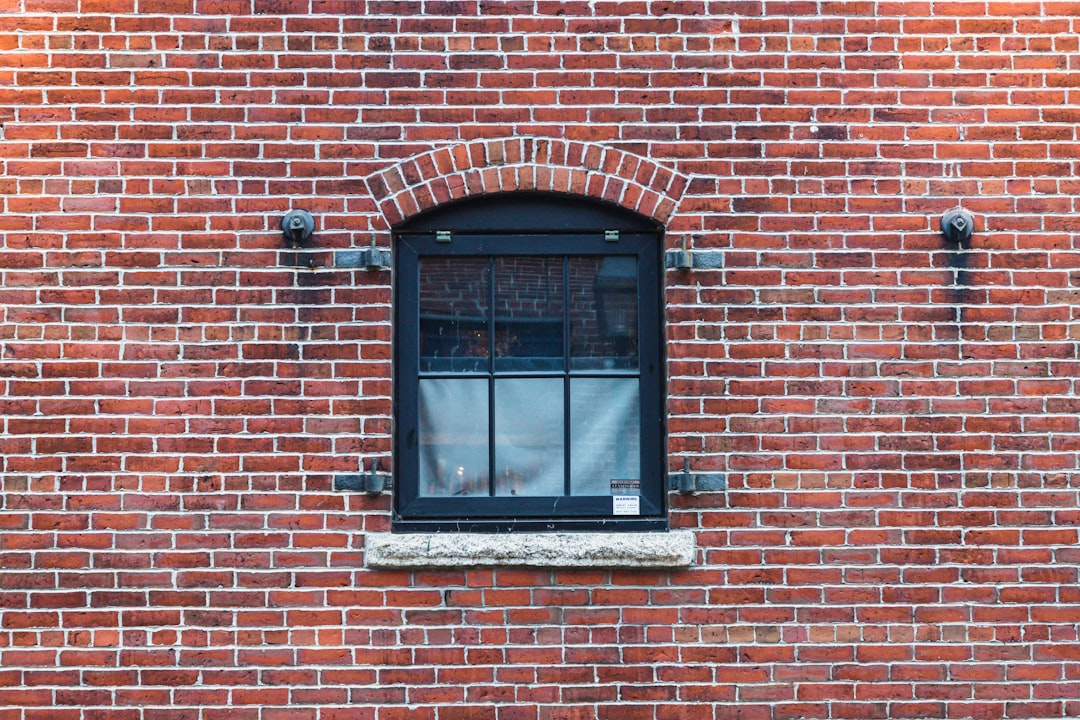How to Drive Conversions in Commercial Window Replacement Services Using QR Codes: A Step-by-Step Guide
QR codes bridge offline and online engagement, creating new avenues for commercial window installation providers, energy-efficient window suppliers, and repair specialists in glass services to generate qualified leads and win projects. A major industry pain point is that high-value prospects might explore your offerings, read print materials, or pass by jobsite signage without formally converting or being captured in a CRM. This leads to lost opportunities and makes it difficult for sales teams to prioritize real buying intent.
A structured, outcome-focused approach ensures every scan moves a buyer closer to a decision, while giving your teams the attribution and speed they need. The following tactics replace analog, unmeasured interactions with data-rich moments that trigger action and produce measurable results. Real-world programs frequently show faster quote cycles and higher completion rates for forms when scanning replaces typing long URLs or hunting for contact information, as covered in QR codes in marketing.
- Replace analog collateral with QR-activated journeys: Swap printed brochures and static spec sheets for QR-enabled materials that launch instant quote forms, digital catalogs, product spec libraries, installation testimonials, and site survey requests. Use Google Forms QR codes to capture even passive interest while details are fresh, decreasing the drop-off that occurs when prospects are asked to follow up later by phone or email.
- Define clear objectives and success metrics: Decide what each QR deployment should achieve, such as increasing inbound quote requests, lifting warranty registrations, or improving post-install survey completion. Align QR destinations with these goals and set response-time service level agreements so scans convert to meaningful follow-up quickly. This reduces the lag between inquiry and outreach, which is often when competitors win. When surveys are the goal, a Google Forms QR generator keeps data collection simple.
- Prioritize strategic placements with strong CTAs: Position QR codes where decision makers naturally engage, such as lobby displays in managed buildings, digital signage, storefront windows, fleet vehicles, safety posters at jobsites, and post-install leave-behinds. Pair each code with a benefit-driven call to action like Scan for a 48-hour commercial quote or Scan to verify installer insurance and credentials. Use distinct codes by location to segment intent from the first interaction.
- Instrument real-time tracking and attribution: Use QR platforms that log scan time, device, location, and campaign source, then sync that data to your CRM. Connect scans to the sales pipeline to identify which placements produce sales-ready leads, which assets need updating, and where drop-offs occur. See how this works in Sona QR’s product overview.
- Automate routing and nurture based on scan behavior: Trigger different workflows for a director of facilities downloading an energy calculator versus a contractor requesting emergency repair. Automations can route quotes to the right rep, enroll scanners into email sequences with relevant content, and alert sales when high-value accounts re-engage.
Modern QR management tools provide the automation and granularity necessary to ensure no high-fit account is left behind in the conversion process. Over time you can refine placements, creative, and offers based on real performance data, creating a feedback loop that steadily improves conversion rates and sales velocity.
Why QR Codes Matter for Commercial Window Replacement Services

For commercial window replacement services, QR codes address the persistent problem of translating physical visibility into digital opportunity. Valuable traffic remains anonymous when building managers, contractors, or architects see your fleet on the road, pass by your jobsite fence banners, or review printed proposals without an immediate digital path to act. Without an easy scan-to-inquiry option, intent goes undetected and months of brand exposure fail to materialize into measurable pipeline.
QR codes turn every offline surface into a measurable entry point that aligns with the way modern buyers research and buy. Dynamic codes let you change offers, landing pages, and calculators based on seasonality, local rebate programs, updated energy codes, or product launches, without reprinting. When these codes are integrated with analytics and CRM systems, you illuminate which physical placements drive high-fit engagement, which messages resonate, and where friction occurs in the journey. This clarity enables smarter budget allocation, better personalization, and faster follow-up across the entire commercial buying cycle.
- Bridge physical touchpoints to digital actions: Let prospects jump from signage, trade show displays, and project flyers into quote forms, scheduling apps, or project galleries in a single scan. This reduces the chance of lost interest between first impression and next step.
- Support speed and simplicity expectations: Facility leaders expect rapid quotes and clear documentation. A QR code that opens a pre-filled form or a mobile-ready spec page meets that expectation without app downloads or time-consuming searches.
- Unlock dynamic content and continuous optimization: Update destinations after printing to reflect new rebates or energy standards, then test CTAs and landing pages. For campaign ideas, explore how to integrate QR codes into your marketing.
Common QR Code Formats for Commercial Window Replacement Service Use Cases

Selecting the right QR code format is central to creating high-converting experiences. Different audiences and moments call for different actions, from saving a contact to booking an assessment. In commercial window replacement, the following formats map well to the most common interactions.
- Web links: Send scanners directly to tailored landing pages such as instant quote forms, energy savings calculators, interactive galleries of retrofit projects, rebate explainer pages, or regional case studies. For price-sensitive buyers, route to a cost estimator. For technical spec seekers, route to a dynamic library of U-factor and SHGC documentation.
- vCards: Allow a property manager, GC, or maintenance director to save a sales rep’s contact details instantly. This minimizes misplaced business cards and makes it easier to reconnect when budget cycles open or projects move from planning to procurement.
- SMS or email triggers: Launch a pre-filled text or email to request a site assessment, approve a change order, or report a warranty issue. Pre-populated templates reduce friction and shorten the time between issue discovery and action. See how QR codes for SMS streamline responses.
- Wi-Fi access: Provide secure guest network access for client stakeholders visiting the install site, or for subcontractors needing temporary connectivity. Faster access means fewer delays retrieving permits, specs, or safety documents during critical work windows.
- App downloads or portals: If you offer a client portal or mobile app for work orders, approvals, or warranty management, embed QR codes that send scanners to the correct app store or web portal, auto-detecting device type for a seamless start.
Dynamic QR management ensures each destination stays current and relevant as offers change and projects progress. Use dynamic codes for campaigns that need editability, tracking, and segmentation, and reserve static codes for evergreen resources like your safety manual or installer credential verification page.
Where to Find Growth Opportunities

The risk of missing qualified prospects is highest at physical or printed touchpoints with the most foot traffic and attention, yet the least measurement. Identifying these high-intent moments and instrumenting them with QR-driven calls to action turns ambient interest into named accounts and pipeline. Once you know which placements outperform, you can refine creative, shift spend, and replicate winning patterns across regions or verticals.
Focus on surfaces and situations where building decision makers, facility managers, and contractors already pause, read, or wait. Equip each placement with a clear, benefit-forward offer and a distinct QR code. When possible, align the offer with context, such as a Scan to book a 30-minute retrofit assessment near freight elevators or Scan to see energy savings for multi-story buildings on lobby signage.
- Building perimeter signage: Convert fence wraps, banners, and window decals into scan-to-quote drivers with messages tailored to nearby property types, such as office towers or healthcare facilities. For execution ideas, consider QR code signs. Use separate codes by location to identify high-performing sites.
- Fleet vehicles: Turn truck and van wraps into lead generators with offers like Scan for emergency board-up service or Scan to verify installer certifications. Include city-specific landing pages to localize the experience and track region-level performance, and instrument vehicles with unique codes.
- Installation reports and leave-behinds: Add QR codes to post-install packets that prompt warranty activation, equipment maintenance scheduling, and post-service surveys. This increases registration rates and surfaces accounts interested in ongoing service or upgrades. Use durable stickers and labels on equipment for long-term access.
- Property manager events: Place QR codes on flyers, name badges, and swag at BOMA or IFMA events. Route scans to curated landing pages with commercial case studies and appointment scheduling. These scans capture context-rich leads you can segment by event and content viewed.
- Direct mail: Combine mailers with QR-linked calculators showing ROI of high-performance glazing, daylighting benefits, or HVAC load reductions. Prospects can scan to view building-type-specific savings models, enabling faster, data-backed decisions. Tie scans to unique direct mail codes for attribution.
Use Cases for QR Codes in Commercial Window Replacement Services

Effective QR deployment starts with mapping the top moments that benefit from instant digital action. For commercial window providers, the following use cases consistently deliver stronger capture rates and cleaner data than analog processes.
- Scan-to-quote from storefronts and banners: Put Scan for a 48-hour quote on windows, perimeter signage, and lobby posters. Route to a short form that requests building type, square footage, and preferred timeline. This shrinks response time and prevents hot prospects from dropping into a phone queue or navigating a generic website.
- Warranty activation and service booking: Include QR codes on installation leave-behinds, window labels, and equipment tags. Scanners land on pre-filled registration forms or service request pages associated with the project number. The result is higher warranty activation rates, more accurate asset data, and ongoing upsell opportunities. For feedback collection, use Google Forms QR codes.
- Trade show and property manager event engagement: Feature QR codes on booth walls, brochures, and demo stations to unlock project galleries, sustainability whitepapers, or credential verification. Even if a visitor is not ready to talk, their scan signals interest and creates a digital breadcrumb for tailored follow-up.
- Safety and compliance verification: Post QR codes at jobsites that link to installer OSHA credentials, insurance certificates, or safety plans. Clients and inspectors can verify documentation in seconds, increasing trust and reducing friction during audits or walk-throughs.
- Facility staff training and maintenance: Place QR codes near newly installed windows or in maintenance rooms to open care guides, cleaning instructions, or troubleshooting videos. This reduces support calls and extends product performance, while giving insight into which locations request training frequently. See cross-industry ideas in QR codes for cleaning.
Each of these use cases replaces a manual, error-prone step with a streamlined interaction that is faster for the client and far more measurable for your team. The outcome is stronger conversion, better data hygiene, and a more responsive customer experience.
How to Build High-Value Audiences for Retargeting with QR Code Campaigns
Many interested accounts in commercial window services remain anonymous because they interact with physical assets that are not tied to your digital funnel. Each QR scan transforms anonymous attention into a signal that carries intent, context, and timing. With multiple QR codes placed along the journey, you can automatically segment audiences and personalize outreach, making every message more relevant. Sona is an AI-powered marketing platform that turns first-party data into revenue through automated attribution, data activation, and workflow orchestration.
Start by distinguishing between the people who manage buildings and the people who work on them. Property managers, facility directors, and HOA boards have different priorities than GCs and specialty contractors, and their scan behavior will reflect that. Map those differences to audience tags in your marketing systems so that automation and sales follow-up can respect the buyer’s role and readiness.
- Create unique codes by journey stage: Use one code for awareness placements such as fence banners and fleet vehicles, another for consideration assets such as spec sheets and project galleries, and a third for conversion materials such as pricing sheets. Each scan feeds a segmented list aligned to funnel stage, which guides next-best actions.
- Tag by use case and intent: Label scans according to the task, such as quote request, info gathering, credential verification, warranty activation, or service support. Tailor subsequent outreach to match intent. For example, follow a spec sheet scan with a technical webinar invite, while a quote scan should trigger rapid sales contact.
- Segment by context and timing: Compare after-hours scans from lobby posters to weekday scans from trade show booths. Context often correlates with urgency. An after-hours scan for emergency repair implies a shorter follow-up window than a midday scan of a rebate guide.
- Sync with CRM and ad platforms: Feed scan data into HubSpot, Salesforce, or your MAP to create behavior-based segments. Use these segments for email nurture, SMS prompts, and custom audiences in Meta or LinkedIn. For a complete retargeting framework, see Sona’s Playbook titled intent-driven retargeting: driving high-impact campaigns with first-party intent signals.
These segmentation tactics convert raw scan activity into precise audience models that improve open rates, reduce cost per qualified lead, and increase the likelihood of timely conversations. Over time, your scan data becomes a reliable predictor of purchase readiness and service needs.
Integrating QR Codes Into Your Multi-Channel Marketing Mix
In many commercial window operations, print and field marketing run in parallel with digital campaigns, yet data rarely connects across channels. QR codes eliminate that disconnect by turning static assets into interactive gateways that feed your central analytics and CRM. The result is a cohesive funnel where offline awareness flows into measurable online engagement and ultimately into pipeline.
To make the most of this, ensure that every channel has a logical next step available by scan. Pair each QR with a specific promise that matches the medium. A truck wrap might emphasize speed, while a technical brochure emphasizes compliance. Then centralize all scan data to understand which channels are moving buyers forward and where to optimize.
- Brochures and spec sheets: Add QR codes to product brochures, retrofit guides, and compliance one-pagers. Scanners can access live spec libraries, updated rebate info, or a cost estimator. You get attribution on which documents drive engagement and which messages need refinement. Start with brochures that point to live content.
- Social media and user-generated content: Use QR codes on event signage or handouts to prompt posting of installation photos with a branded hashtag. Direct scans to a gallery submission form with consent language. Later, retarget scanners with case studies that mirror the projects they shared. Connect QR to social networks for ongoing engagement.
- Direct mail to property managers: Include QR codes in mailers that link to a building-type-specific savings calculator and a short form to book a site walk. Because mail lists often identify company or property, you can tie scans back to named accounts and follow up with highly relevant content using direct mail.
- Digital signage and lobby displays: In buildings where you have permission to display digital signage, invite passersby to scan for a same-week assessment or to explore daylighting benefits for tenant satisfaction. Lobby dwell time is a prime window for action. Digital signage makes it measurable.
- Conferences and trade shows: Put QR codes on booth towers, demo stations, and staff badges. Each code can be tied to a different action like booking a consultation, downloading a case study, or joining a webinar series. Sync scans instantly to your pipeline to eliminate manual entry and accelerate responses.
By treating QR codes as the connective tissue of your marketing mix, you create a continuous loop between awareness, engagement, and conversion. When managed on a unified platform, your team can monitor performance across channels and coordinate changes that compound results.
Step-by-Step QR Campaign Execution Checklist
Executing a high-impact QR campaign in commercial window replacement requires clear goals, thoughtful design, disciplined deployment, and rigorous measurement. The steps below outline a practical process you can run each quarter or align to major seasons such as budget approvals or rebate changes. While the details can vary by market, the structure remains the same: choose a use case, pick the right code type, design for scanning, deploy where it matters, then optimize relentlessly.
Before you begin, confirm your CRM and analytics connections so that scan data feeds lead scoring, routing, and nurture. This ensures your team can move quickly when high-intent accounts scan and engage.
Step 1: Choose Your Use Case
Clarify the business problem you want to solve and the audience you want to influence. For example, your objective might be to increase qualified quote requests from property managers preparing a mid-year retrofit.
- Define the outcome: Determine whether success means more booked assessments, faster warranty activations, or improved survey completion. Tie the outcome to a specific KPI such as form conversion rate or average time to first response.
- Select the moment to activate: Identify where and when the audience will scan, such as lobby signage, fleet wraps, or post-install packets. Align the offer with that moment so the value is obvious.
Step 2: Select QR Code Type
Choose between static and dynamic codes based on your flexibility and tracking needs. In most commercial campaigns, dynamic codes will provide more control and better data.
- Static codes for fixed resources: Use when you never plan to change the destination, such as a permanent installer credential page or a safety handbook PDF.
- Dynamic codes for campaigns: Use when you want to edit destinations, test offers, or track scans by device, time, and location. Dynamic codes also enable retargeting and multi-touch attribution.
Step 3: Design and Test
Make your codes unmistakable, scannable, and branded. Visual clarity and strong CTAs increase scan rates, especially in environments with variable lighting or distance.
- Brand and frame the code: Add a logo, brand colors, and a clear border to distinguish the code from surrounding graphics. Include a short, benefit-driven CTA like Scan for a 48-hour quote.
- Test in real conditions: Validate scannability at typical distances and angles, and under bright sunlight or low indoor lighting. Test across iOS and Android devices to catch issues early.
Step 4: Deploy Across Channels
Roll out QR assets where they will have the most impact. Pair each placement with a tailored message and a unique code so performance can be measured precisely.
- Prioritize high-visibility, high-intent surfaces: Use storefront windows, jobsite fence banners, conference booth walls, direct mailers, and post-install leave-behinds. Match the offer to the context, such as Scan to schedule a compliance walk-through in regulated environments.
- Standardize internal processes: Document how field teams should place codes on vehicles or signage, and how sales should follow up by segment and use case. Consistency improves outcomes.
Step 5: Track, Analyze, and Optimize
Connect scans to revenue and continuously improve. The value of QR comes from the data you collect and the changes you make because of it.
- Monitor key metrics: Track scan volume by asset, unique scanners, form completion rate, time to first response, and pipeline generated. Use UTM parameters on destinations for deeper analysis.
- Iterate on creative and placement: A/B test CTAs, offers, and landing pages. Shift budget to the placements that drive the most qualified engagement and replicate them across territories.
Once your first campaign is live, build a quarterly rhythm of testing and refinement. Over time you will build a library of proven placements, messages, and workflows that compound your performance gains.
Tracking and Analytics: From Scan to Revenue

Incomplete or siloed data makes it difficult for commercial window replacement businesses to personalize nurture or justify marketing spend. Knowing a code was scanned is only the beginning. To turn scans into revenue, you must see the entire journey from first scan to form completion, sales contact, and closed opportunity. This requires connecting offline activity to online analytics and CRM records, then analyzing which patterns signal purchase readiness. For measurement frameworks, see Sona’s blog post titled The essential guide to offline attribution.
A robust analytics approach will go beyond vanity metrics like total scans and instead focus on the behaviors that correlate with buying intent. For example, a series of evening scans of a compliance checklist from the same IP block could indicate an active project. By capturing and acting on these signals in near real time, you help sales reach high-fit accounts at exactly the right moment.
- Track every scan with context: Capture time, device, location, and campaign source for each scan. This allows you to understand which placements perform and when.
- Measure engagement by channel: Compare scans and conversions from vehicles, jobsite banners, brochures, lobby displays, and events. Attribute results to the original asset to inform reallocations.
- Respond in real time: Route high-intent scans to sales with alerts and pre-filled records. Use live dashboards to optimize campaigns while they are running.
- Sync with CRM and MAP: Automatically enrich leads in HubSpot or Salesforce with scan activity. Trigger nurture sequences aligned with the specific use case.
- Attribute revenue with multi-touch models: Link scans with website visits, ad clicks, email engagement, and CRM milestones to see how QR interactions contribute to pipeline and closed business.
- Unify touchpoints across buying stages: Build journeys that show how awareness placements like fleet wraps interact with conversion placements like pricing sheets. This reveals the combinations that move buyers forward.
With these practices in place, QR codes become a dependable source of both demand and insight. Your team will be able to forecast more accurately, invest more confidently in winning channels, and shorten the path from first scan to signed contract.
Tips to Expand QR Success in Commercial Window Replacement Services
Scaling QR impact requires attention to both strategy and execution. The most successful teams treat QR as a long-term capability rather than a single campaign. They standardize how codes are created, placed, and measured, and they train field and sales teams to promote scanning with clear benefit statements.
Prioritize tips that align to your most common media, the buyer journeys you want to support, and the tools your team already uses. Then add creative deployments that meet your buyers where they are during planning, construction, and maintenance.
- Use unique codes for each asset and location: Generate distinct QR codes for every sign, vehicle, brochure, and direct mail piece. This lets you pinpoint the exact placements that drive pipeline and replicate success across markets.
- Add UTM parameters to all QR destinations: Tag source, medium, and campaign in your URLs so web analytics can attribute traffic accurately. Combine UTM data with scan metadata for a complete view of performance. For broader context on why measurement matters, read Sona’s blog post titled The importance of accurate revenue attribution.
- Automate scan-triggered workflows: Connect QR activity to your marketing and sales tools so each scan can trigger a sequence, such as a quote confirmation email, a calendar invite for an assessment, or a sales alert for repeat engagement.
- Equip teams to promote scans: Train installers and sales reps to point out QR codes during walk-throughs and handoffs. A technician can say, Scan this label any time you need service or to register your warranty, which increases usage and reduces support friction.
- Add creative placements that fit your operations: Print small QR stickers for equipment rooms that open maintenance logs, and include QR codes on invoices that let clients schedule annual inspections or request energy audits with one tap.
By institutionalizing these practices, QR becomes a permanent lever for conversion and customer experience improvement. As scan volumes and data quality grow, so will the sophistication of your targeting and the efficiency of your follow-up.
Final Thoughts
QR codes have rapidly become a necessity for commercial window replacement services, especially for organizations working to bridge the gap between offline visibility and tangible sales engagement. Every sign, vehicle, brochure, and leave-behind can become a digital onramp that captures intent in the moment. When those scans connect to quote flows, spec libraries, calculators, and scheduling tools, buyers find what they need faster, and your team gains the data needed to prioritize the right accounts.
The strategic advantage compounds as you integrate scans into your CRM and analytics stack. You can segment audiences by role and behavior, tailor nurture to project stage, and see exactly which placements and messages move decision makers from interest to action. The result is a revenue engine that reflects how commercial buyers actually operate: a sequence of short, situational interactions that add up to trust and commitment.
Commercial window replacement companies that embrace QR technology will convert more offline impressions into qualified pipeline, reduce follow-up delays, and minimize the risk of missed segmentation. By deploying QR codes thoughtfully across the customer journey, optimizing conversion flows, and syncing scan data with marketing and sales systems, you create a continuous improvement loop. That loop is powered by real-world engagement and precise attribution, and it turns every scan into a measurable step toward your next awarded project. Start creating QR codes for free.
Conclusion
QR codes have transformed the commercial window replacement services industry from traditional marketing tactics into dynamic, measurable growth opportunities. By integrating QR codes, businesses can effortlessly drive customer acquisition, enhance client interactions during consultations, and streamline scheduling for estimates—turning every printed flyer, vehicle decal, or storefront sign into a powerful conversion tool. Imagine instantly knowing which marketing efforts generate the most leads and being able to adjust campaigns on the fly without costly reprints.
With Sona QR, creating dynamic, trackable QR codes tailored to your commercial window replacement services is quick and intuitive. You can update campaigns in real time, monitor scan data to identify high-interest prospects, and directly link engagements to revenue. No more guesswork—just smarter marketing that maximizes every outreach channel. Start for free with Sona QR today and transform every scan into a new customer, a booked appointment, or a closed deal.
FAQ
What are the benefits of using QR codes in commercial window replacement services?
QR codes convert offline visibility into measurable digital engagement, generate qualified leads, speed up quote cycles, improve data capture, and enable precise audience segmentation and faster follow-up.
How can I find a reliable commercial window replacement service using QR codes?
You can scan QR codes on signage, fleet vehicles, brochures, and event materials that link to verified installer credentials, quotes, and service information to quickly identify and connect with reliable providers.
What types of commercial windows are most energy-efficient according to QR code marketing materials?
Energy-efficient commercial windows often feature updated U-factor and SHGC specifications, rebate eligibility, and daylighting benefits, which can be explored through QR code-linked spec libraries and calculators.
What is the typical process for replacing commercial windows using QR code technology?
The process involves scanning QR codes to access instant quote forms, schedule assessments, verify installer credentials, activate warranties, and request post-install services, streamlining communication and project management.
How much does it cost to replace commercial windows as indicated in QR code resources?
Costs vary by building type and project scope, but QR codes often link to cost estimators and instant quote tools that provide tailored pricing based on specific building details and timelines.





















